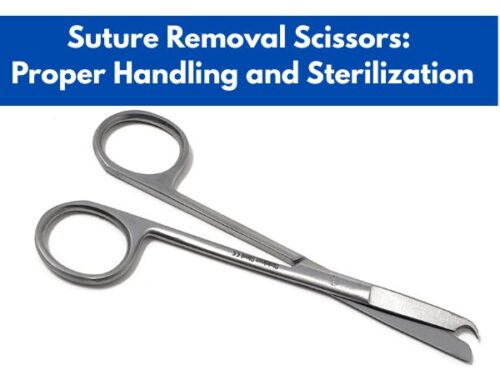What are the 3 Steps to Applying a Tourniquet?

Man has used several instruments throughout the history of medicine to make treatment easier and more efficient. For this purpose, he invented gadgets, found new herbs, and tested them to consider their effectiveness in treating different diseases. To treat the problems afflicted upon humans by nature, man tried by all his means to find ways to help treat these ailments and save lives. As time passed, the ancient techniques that were used in the past changed their shapes but the benefits and purposes remain the same. Such a piece of medical equipment that has been used for centuries by humans is a tourniquet. It is not only used in hospitals and medical settings but is also used by emergency care personnel and military officers. Today we are going to discuss what a tourniquet is and what the three steps to applying a tourniquet are. So let’s start.
What is a tourniquet?
A tourniquet is a medical equipment that is used to control blood flow by applying pressure to an extremity or a limb. It does so by occluding the nerves of the limb injured limb and ensures that excessive blood loss does not occur.
As blood is an important resource for the human body to survive and function properly, tourniquets help to prevent the wastage of this highly significant resource and consequently help to save the lives of people.
The use of tourniquets dates back to the fourth century B.C. The ancient Romans also used tourniquets during the procedures of amputations to control blood blow. Presently, tourniquets are used by hospitals, clinics, militaries, ambulances, and emergency caregivers.
Due to the assistance tourniquets provide in reducing blood flow, these have become an important part of emergencies and militaries where these tourniquets can help to control blood flow till proper medical care is given to the injured person.
Three steps to applying a tourniquet

Applying a tourniquet
During an emergency where a person is bleeding uncontrollably, you cannot just wait for the first responders to arrive as the person may die due to excessive blood loss before getting any treatment. Tourniquets are helpful in controlling excessive blood flow during emergencies till help arrives.
Although one does not need any special medical certification to use a tourniquet, these should be used with extreme care as it requires knowing when to use it, how to use it, and taking note of the time at which it is applied.
Ideally, it should be applied by a person who is trained to do so as knowing when and how to apply is an important life-saving skill. There are three important steps to applying a tourniquet correctly. These steps are described below.
Check the wound and apply pressure
The first thing you will need to do is to find the source of the bleeding. It is important to note that tourniquets can only be applied to the limbs and are not used for head or torso injuries.
If the injury is on the head or torso, you will need to apply pressure with material to stop bleeding instead of applying a tourniquet. But if it is on a limb you will need to identify where the blood is coming from and apply direct pressure on the wound to stop the blood from flowing. If the blood does not stop after applying continuous pressure and continues to flow, you will need to fasten a tourniquet.

Application of a tourniquet
Position and tighten the tourniquet
Before applying a tourniquet to the injured limb, you should tell the injured person that you are going to apply a tourniquet which can be painful but it can save the person’s limb and even their life.
To apply the tourniquet, you will need to cut any clothing that is covering the wound as a tourniquet is applied on bare skin. You should always position the tourniquet several inches above the injury.
According to the American Red Cross, a tourniquet should be applied about 2 inches above the wound and never directly on a joint. In case you do not have a tourniquet with you, you can use a cloth, towel, or any material to be used in the place of a tourniquet.
In this case, you will need to make a windlass which is a lever that is used to twist the tourniquet tighter. You can use a stick or spoon as a windlass. In the case of using a tourniquet, you will need to twist the windlass which will help to increase pressure. You should check at which pressure the bleeding stops or significantly reduces.
Secure and time the tourniquet
Once you see a significant reduction in the blood flow, secure the windlass by tying its ends to the limb of the injured person. The timing for which a tourniquet is applied is highly significant to note. The first responders should know the exact time at which the tourniquet was applied as a tourniquet should never be applied for more than two hours.
Applying a tourniquet for more than two hours can cause permanent damage to the blood vessels, muscles, and nerves. For this reason, you should always note and mention the time of application of a tourniquet. The tourniquet must only be removed by a healthcare provider in the emergency department.

The process of applying a tourniquet
Conclusion
Tourniquets are really helpful medical equipment that is used in several fields due to the benefits they provide. These are used by several militaries, ambulance services, emergency care, and hospitals to reduce the blood flow from a limb.
Tourniquets are used in surgeries and emergencies to prevent excessive blood flow and consequently help save the patient’s life. Although one does not need to be trained to use a tourniquet, the person using it must have an understanding of when and how to use a tourniquet.
Also, the steps required to correctly apply a tourniquet should be followed strictly to avoid any undesirable results. When applied correctly, tourniquets can help prevent excessive blood flow and save lives. Due to this, we can say that tourniquet is indeed a lifesaver.


















